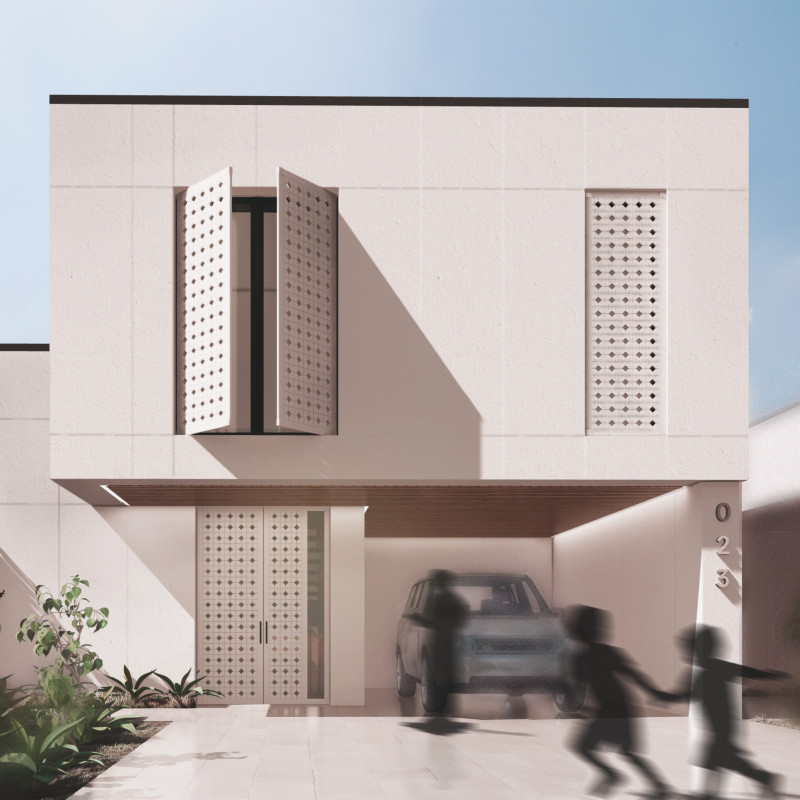5 key facts about this project
At its core, this project functions as a hub for community engagement and residential comfort. It is structured to accommodate various social activities within its spatial arrangement, encouraging interaction among inhabitants. The layout integrates open communal spaces that facilitate gatherings and events, enhancing the sense of community. The residential units have been thoughtfully designed to prioritize light and ventilation, with an emphasis on creating inviting interiors that foster well-being.
Key architectural elements include a carefully considered façade that employs a harmonious mix of concrete, glass, and wood. The concrete elements provide a sense of permanence and stability, while the glass sections create transparency and fluidity between the indoor and outdoor environments. This blend of materials also plays a significant role in energy efficiency, allowing natural light to penetrate deep into the living spaces while providing views of the surrounding landscape. Wood accents bring warmth to the structure, contrasting with the more industrial qualities of concrete and steel.
The design approach is underscored by several unique strategies that distinguish this project within the architectural landscape. One notable aspect is the incorporation of green roofs and terraces that not only contribute to biodiversity but also serve to reduce urban heat and improve insulation. These outdoor spaces are designed as extensions of the living areas, providing residents with opportunities for gardening, relaxation, and socializing while promoting a sustainable lifestyle.
Another innovative aspect of the design is the attention to the integration of smart technologies that enhance the functionality of the space. These technologies include energy-efficient systems for heating and cooling, smart lighting that adjusts according to the time of day, and water conservation mechanisms that ensure minimal waste. This thoughtful implementation of technology demonstrates a commitment to creating a building that meets the needs of modern living while minimizing its ecological footprint.
The project’s architectural design effectively responds to its geographical context, drawing inspiration from local traditions and cultural nuances. By marrying contemporary techniques with historical elements, the design pays homage to the region's heritage while positioning itself firmly within the realm of modern architecture. This dialogue between old and new is evident in the building shapes, material choices, and spatial organization, showcasing the architect's sensitivity to place.
The extensive use of vertical gardens and green walls throughout the project further enhances the aesthetic and environmental impact. These features not only beautify the structure but also improve air quality and contribute to the overall psychological well-being of the residents. By incorporating biophilic design principles, the project reinforces the connection between nature and urban living.
In reviewing architectural plans and sections that detail this project, one can gain further insights into the meticulous planning and design considerations that define its character. Each component, from the layout of residential spaces to the arrangement of communal areas, reveals a commitment to enhancing user experience. The architectural ideas behind this project emphasize the importance of functionality, sustainability, and community cohesiveness, all while providing a visually appealing structure.
To explore this project further, one can delve into the architectural designs and sections that showcase the unique design solutions implemented throughout the building. Each detail reflects a thoughtful approach to architecture that prioritizes both form and function, inviting viewers to appreciate the full scope of the project’s design intents.


 Gabriel Tudora,
Gabriel Tudora, 























